The Path towards Endangered Species: Prehistoric Fisheries in Southeastern Brazil
- PMID: 27355355
- PMCID: PMC4939631
- DOI: 10.1371/journal.pone.0154476
The Path towards Endangered Species: Prehistoric Fisheries in Southeastern Brazil
Abstract
Brazilian shellmounds are archaeological sites with a high concentration of marine faunal remains. There are more than 2000 sites along the coast of Brazil that range in age from 8,720 to 985 cal BP. Here, we studied the ichthyoarchaeological remains (i.e., cranial/postcranial bones, otoliths, and teeth, among others) at 13 shellmounds on the southern coast of the state of Rio de Janeiro, which are located in coastal landscapes, including a sandy plain with coastal lagoons, rocky islands, islets and rocky bays. We identified patterns of similarity between shellmounds based on fish diversity, the ages of the assemblages, littoral geomorphology and prehistoric fisheries. Our new radiocarbon dating, based on otolith samples, was used for fishery characterization over time. A taxonomical study of the ichthyoarchaeological remains includes a diversity of 97 marine species, representing 37% of all modern species (i.e., 265 spp.) that have been documented along the coast of Rio de Janeiro state. This high fish diversity recovered from the shellmounds is clear evidence of well-developed prehistoric fishery activity that targeted sharks, rays and finfishes in a productive area influenced by coastal marine upwelling. The presence of adult and neonate shark, especially oceanic species, is here interpreted as evidence of prehistoric fisheries capacity for exploitation and possibly overexploitation in nursery areas. Various tools and strategies were used to capture finfish in seasonal fisheries, over rocky reef bottoms and in sandy littoral environments. Massive catches of whitemouth croaker, main target dermersal species of South Atlantic coast, show evidence of a reduction in body size of approximately 28% compared with modern fisheries. Fishery activity involving vulnerable species, especially in nursery areas, could mark the beginning of fish depletion along the southeastern Brazilian coast and the collapse of natural fish populations.
Conflict of interest statement
Figures

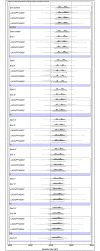
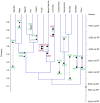






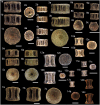
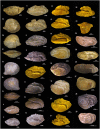

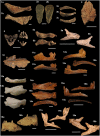
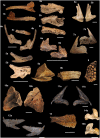
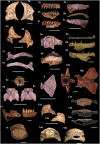
Similar articles
-
Threatened fish and fishers along the Brazilian Atlantic Forest Coast.Ambio. 2017 Dec;46(8):907-914. doi: 10.1007/s13280-017-0931-9. Epub 2017 Jul 14. Ambio. 2017. PMID: 28710567 Free PMC article.
-
Marine reservoir effect on the Southeastern coast of Brazil: results from the Tarioba shellmound paired samples.J Environ Radioact. 2015 May;143:14-19. doi: 10.1016/j.jenvrad.2015.02.002. Epub 2015 Feb 20. J Environ Radioact. 2015. PMID: 25703433
-
Leave forever or return home? The case of the whitemouth croaker Micropogonias furnieri in coastal systems of southeastern Brazil indicated by otolith microchemistry.Mar Environ Res. 2019 Feb;144:28-35. doi: 10.1016/j.marenvres.2018.11.015. Epub 2018 Nov 27. Mar Environ Res. 2019. PMID: 30527444
-
Larval dispersal and movement patterns of coral reef fishes, and implications for marine reserve network design.Biol Rev Camb Philos Soc. 2015 Nov;90(4):1215-47. doi: 10.1111/brv.12155. Epub 2014 Nov 25. Biol Rev Camb Philos Soc. 2015. PMID: 25423947 Review.
-
An environmental (pre)history of European fishing: past and future archaeological contributions to sustainable fisheries.J Fish Biol. 2019 Jun;94(6):1033-1044. doi: 10.1111/jfb.13929. Epub 2019 Mar 12. J Fish Biol. 2019. PMID: 30746714 Review.
Cited by
-
Bridging archaeology and marine conservation in the Neotropics.PLoS One. 2023 May 25;18(5):e0285951. doi: 10.1371/journal.pone.0285951. eCollection 2023. PLoS One. 2023. PMID: 37228060 Free PMC article.
-
New Occurrences of the Tiger Shark (Galeocerdo cuvier) (Carcharhinidae) off the Coast of Rio de Janeiro, Southeastern Brazil: Seasonality Indications.Animals (Basel). 2022 Oct 14;12(20):2774. doi: 10.3390/ani12202774. Animals (Basel). 2022. PMID: 36290161 Free PMC article.
-
What fisher diets reveal about fish stocks.Ambio. 2021 Oct;50(10):1851-1865. doi: 10.1007/s13280-021-01506-0. Epub 2021 Mar 7. Ambio. 2021. PMID: 33677808 Free PMC article.
-
Late shellmound occupation in southern Brazil: A multi-proxy study of the Galheta IV archaeological site.PLoS One. 2024 Mar 21;19(3):e0300684. doi: 10.1371/journal.pone.0300684. eCollection 2024. PLoS One. 2024. PMID: 38512858 Free PMC article.
-
Fish and maize: Bayesian mixing models of fourteenth- through seventeenth-century AD ancestral Wendat diets, Ontario, Canada.Sci Rep. 2019 Nov 13;9(1):16658. doi: 10.1038/s41598-019-53076-7. Sci Rep. 2019. PMID: 31723157 Free PMC article.
References
-
- Wagner G, Hilbert K, Bandeira D, Tenório MC, Okumura MM. Sambaquis (shell mounds) of the Brazilian coast. Quat Int. 2011; 239: 51–60.
-
- Lima TA. Dos mariscos aos peixes: um estudo zooarqueológico de mudança de subsistência na pré-história do Rio de Janeiro. M.Sc. Thesis, Universidade de São Paulo. 1991. Available: http://www.worldcat.org/title/dos-mariscos-aos-peixes-um-estudo-zoo-arqu....
-
- Dos Santos CMC. A Ictiofauna do sambaqui de Camboinhas, Niterói, RJ. Documento de trabalho: Sér Arqueol. 1995; 3: 65–72.
-
- Magalhaes RMM, Curvelo MA, Mello EMB. O sambaqui de Manitiba I e outros sambaquis de Saquarema, RJ In: A fauna na alimentação. Documentos de Trabalho, Sér Arqueol Mus Nac, UFRJ; 2001; 5: 55–69.
-
- Kneip LM. O sambaqui de Manitiba I e outros sambaquis de Saquarema, RJ Sér Arqueol Mus Nac. UFRJ; 2001; 5–91.
Publication types
MeSH terms
LinkOut - more resources
Full Text Sources
Other Literature Sources
Miscellaneous

